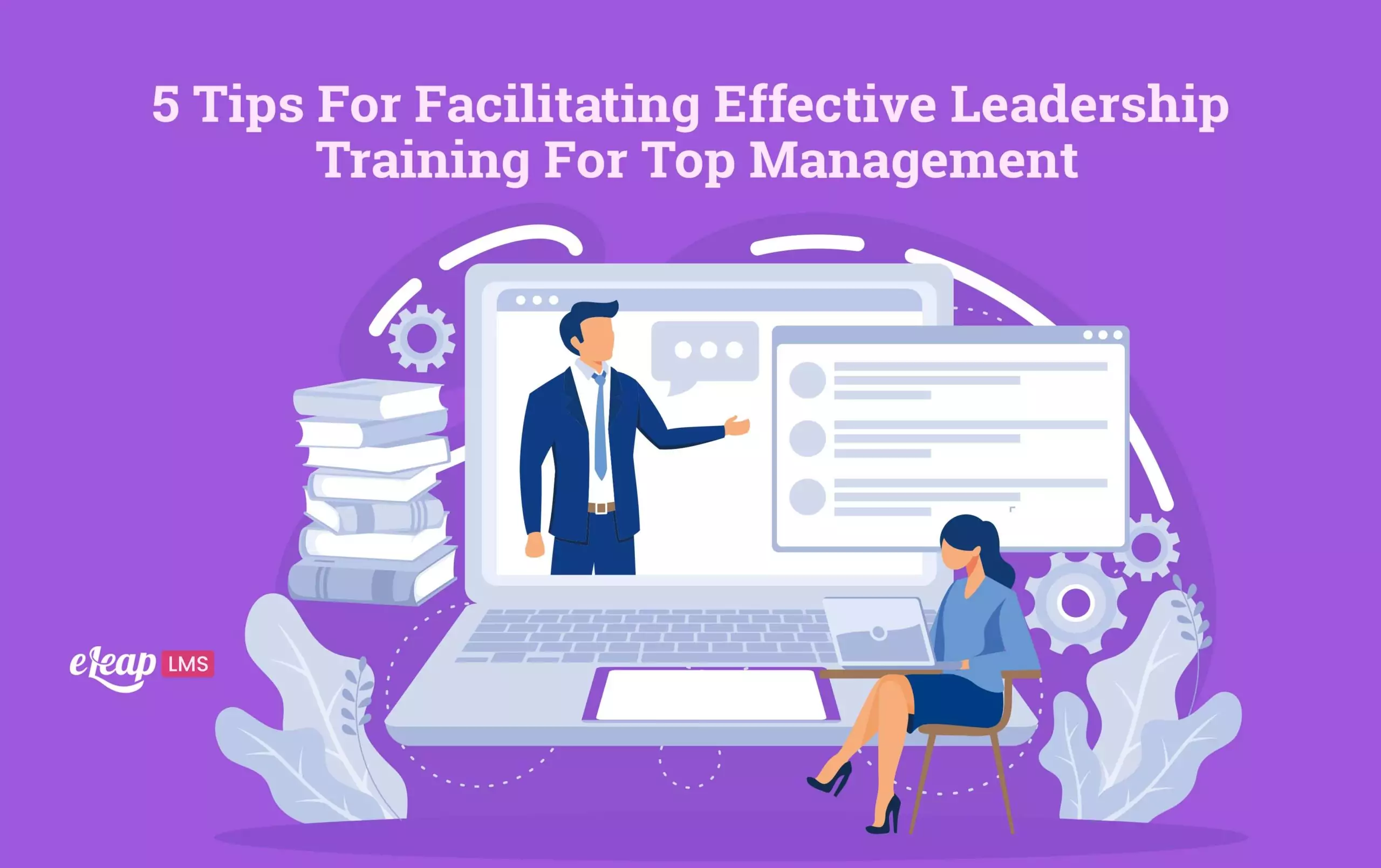5 Tips For Facilitating Effective Leadership Training For Top Management

Leadership is the cornerstone of any successful organization. Strong leadership drives the company’s vision, motivates employees, and enables businesses to grow and succeed. However, developing great leaders doesn’t happen overnight. It requires a combination of innate qualities, skill-building, and continuous learning. That’s why effective leadership training is essential, especially for top management.
In this blog post, we’ll share five tips to help you facilitate effective leadership training that will equip your top executives with the knowledge and skills they need to lead their teams successfully. Whether you’re an HR professional, a training manager, or a business owner, these tips will help you create a training program that inspires and transforms your leaders. So, let’s dive in!
Begin With An In-depth And Clear Understanding Of The Organizational Goal
This should be the foundation of any training program, especially leadership training. If you aren’t sure about the organizational goal, you are headed nowhere with the training. For your leadership training program, grasping a complete knowledge of your organizational goals helps you to ensure that you align the training content with the organization’s strategic objectives. Thus, the training content will be effective in equipping the top management team with the necessary skills and knowledge required to achieve the set goals. When your leaders realize that the training content is tied directly to the organization’s strategic objectives, it encourages them to apply what they’ve learned to their daily work.
Analyzing market trends, customer needs, and the competitive landscape is an easy way to determine your organizational goal. You may also need to engage with stakeholders such as customers, employees, and shareholders to discuss ways the organization can improve.

Foster Collaboration And Teamwork
Encouraging collaboration and teamwork amongst your organization’s top management is an essential part of leadership training. Regardless of whatever technique you apply while incorporating leadership training, if you overlook the need to integrate collaboration and teamwork amongst your leaders, all your effort will likely go down the drain. The reason for this is not far-fetched; if your leaders are independent of each other and they aren’t trained to be accommodative of their fellow leaders, it’s only a matter of time before one leader begins to stifle the growth of the other. Every leader starts to strive to become the “leader of other leaders,” therefore birthing unhealthy competition in the organization.
To incorporate collaboration and teamwork, you can infuse group exercises into your training. The exercises should require participants to join forces to complete a task or resolve a problem. This builds their trust, fostering communication and a shared sense of responsibility.
Customize The Training
Organizations have different needs and objectives, and every organization has something unique. Therefore, you can’t take up the same leadership training program incorporated into company A and decide to do the same for company B. It’s advisable to tailor your training content, approach, and delivery to fit your organization’s goals, culture, and leadership style.
To achieve this, you must conduct a “needs assessment” in your organization. Focus on discovering the current leadership skills and knowledge gap. You can achieve this through focus groups, surveys, observation of leadership behavior, and interviews. Utilize this information to develop a customized training program to close these gaps. For instance, leadership knowledge and skills required in the fashion industry may differ from those needed for the healthcare industry. Customizing leadership training is essential to the training’s relevancy, engagement level, and effectiveness.
Provide Ongoing Coaching And Support
Leadership is not a destination but a journey; therefore, you must continue to provide appropriate training and support for your organization’s leaders. You can schedule follow-up meetings so that your leaders can discuss their growth and the challenges they are encountering. This way, your leaders receive personalized guidance and feedback, ultimately improving their leadership skills. In addition, providing ongoing support and guidance can help your top management continue to thrive and evolve as leaders. With that, they can inspire their teams to reach an impressive height of excellence.
Mix Your Training Method
Using a mixture of training methods helps create a dynamic and engaging training program that keeps your participants interested, engaged, and motivated. Different people tend to learn in different ways. Therefore, if your training content delivery is rigid, the chance of the content getting optimized is meager. Participant A might learn more when they are lectured, while participant B might prefer role-plays and participant C with group discussions. What then happens when your training content is delivered only through lectures? That means only people who learn effectively with participant A style will benefit from the training content. However, if you consider all these learning methods and integrate them into your training program, it will be a “win-for-all” situation.
This Is What Happens When a Top Management Leadership Training Program Fails
When the upskilling leadership program of an organization fails, these can happen:
- There is miscommunication and poor performance among the top management team, subsequently affecting productivity.
- A leadership training program that is not effective in improving organizational success can only be considered a waste of time and resources. The organization must have invested a substantial amount of money and time to yield zero or low results.
- There is a lack of direction and authority among the top management team. This, in turn, can lead to demotivation among employees, as they may not see a clear path forward for the organization.
Top company executives have earned their position through years of hard work, industry experience and strong networking. In the business world, resting on one’s laurels is a big no; long-term success requires continuous learning.

According to Longnecker and Fink (2006), “For executives to successfully continue their development…the executive must seek out new information. Top-level managers need to take the time to read relevant publications and books, attend formal continuing education programs, workshops and/or seminars, attend informational meeting and lectures at professional/trade associations, carefully sift through benchmarking information; and, engage in other ‘scanning’ activities, to learn about the needs of their organization and better understand their role demands.”
For many facilitators, training current leaders is more challenging than training rank-and-file employees. Managers, supervisors and chiefs already have their own views of the industry—perceptions that can be difficult or impossible to change. They also adhere to processes and strategies that they have grown accustomed to. As such, introducing new concepts and perspectives to them can be both tedious and complicated.
If you are often assigned to organize and facilitate leadership training for top-level managers, keep these four tips in mind:
- Develop well-researched and structured modules. Remember that you will be dealing with very busy industry experts. If you present information that they already know, they will find the training a waste of time. If you present wrong information, they will immediately have the impression that the training is being facilitated by an amateur. Once they lose interest in the program and doubt your credibility, they will either not pay attention or walk out of the session.
- Avoid telling them what to do. Executives are used to giving out orders and being in control. Your role as facilitator is simply to guide the participants and to make sure that the whole program transpires smoothly. Keep the training interactive and loosely structured to accommodate the different learning styles of your high-profile trainees.
- Monitor the time. Pick up the pace. Keep in mind that managers have neither the time nor patience for small talk or senseless discussions. Majority of the executives you will train are capable of processing information quickly, so get straight to the point and always use concrete examples. As much as possible, stick to the training schedule. Announce any changes beforehand to give your high-profile trainees the chance to adjust their personal schedules.
- Promote cooperation, not competition. Gathering several company leaders in a single room is more difficult than most people think. Managers represent their organizations; when they mingle with other business bigwigs, it is their responsibility to protect confidential company information and to gather industry news. Leadership training is not a platform for participants to compete with one another. It is an opportunity for them to gain new skills in order to run their businesses smoothly.
The key to successful leadership training programs is to keep your participants engaged the entire time. Encourage them to share their insights and allow them to have brief debates about pressing industry issues. As the facilitator, it is your responsibility to keep everyone interested and to make sure that training objectives are being met.
Conclusion
A leader knows the way, goes the way, and shows the way. Therefore, an organization that facilitates effective leadership training for its top management is doing much to invest in its success. We urge you to go ahead and implement these tips and watch your organization rise to an unrivaled success level under the tutelage of its strong and effective leaders!